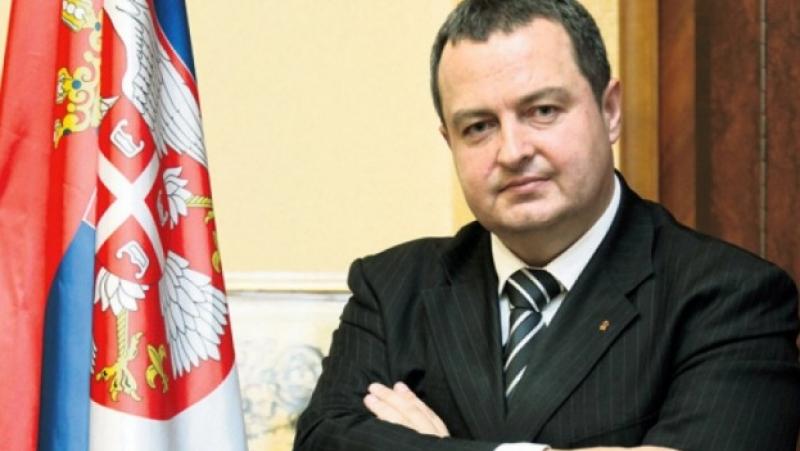/View.info/ Between Christmas and New Year’s parties and celebrations, we invite you to take a look at several centuries-old costumes from the production of the famous play “The Blue Bird” by the Moscow Art Theater. Even if you’re not inspired by the costumes of Bread or Milk and are already in the mood for the holiday season, you can just enjoy this unadulterated beauty.
The Blue Bird premiered on September 30, 1908 at the Moscow Art Theater. Kostantin Stanislavski defines the task as follows: “It must be naive, simple, easy, cheerful, welcoming and illusory and beautiful as
a childhood dream…”
PHOTO ARCHIVE
On Christmas Eve, the boy Tiltil and the girl Mithil are visited by the fairy Berulina. The fairy’s granddaughter is sick and only the Bluebird can save her. Thanks to a magical gift from the fairy, the children can see the souls of various objects. The role of Mitil (left) is performed by Stanislavski’s favorite protégé Alisa Koonen, the leading actress of the Chamber Theater founded by her husband Alexander Tairov. 
PHOTO ARCHIVE
Inanimate objects (clocks, fire, water, bread, milk, etc.) become living beings with their own characters. Together they embark on a perilous journey to find the magical Blue Bird. This is a touching story about how, wherever we look for happiness, it is always most likely and most unexpected quite
nearby. / Water – L. Koreneva

PHOTO ARCHIVE
“… For me as a director, the most important aspect is the stage direction, but it should not be performed verbatim,” writes Stanislavski. “He (Meeterlinck) may be a brilliant writer, but he is not good at costumes, set design and stage mechanics”. / Milk – L. Kosminska 
PHOTO ARCHIVE
According to Maeterlinck’s instructions, the Bread should be dressed in “the splendid costume of a shepherd: a loose dress made of red silk or velvet, embroidered with gold, plus a large turban and a scythe.” Silver’s silver dress should be “half white, half blue like a eunuch – to look like paper for wrapping sugar lumps…” / Sugar – N. Boltin 
PHOTO ARCHIVE
“The most eloquent rebuke of the ‘Meeterlinck suits’ came from my 10-year-old nephew, a perceptive boy,” Stanislavski wrote. “I told him the story of the Blue Bird and convinced him to draw the soul of the Bread. He drew some creature with a big belly and gave it hands, like a Russian kalash, and a head that looked a lot like a doughnut.” / The bread –
N. Baliyev

PHOTO ARCHIVE
“Our production is bright and lively. The main principles are humor and touching lyricism. Comic and dramatic elements are mixed with fantasy,” says Stanislavsky’s main collaborator Vladimir Nemirovich-Danchenko. / Light – V. Baranovska; the fairy – M. Savitka 
PHOTO ARCHIVE
Maeterlinck’s fairytale play in the hands of Stanislavski offers a look at the world through children’s eyes. Perhaps only the naive simplicity of a child can capture the enigmatic beauty of nature hidden under the cover of an anti-human civilization. Stanislavsky understands Maeterlinck’s mysticism not as “fear of death”, but as something inexplicable that the child’s soul touches without a drop of fear. / Vremeot – N. Znamenski, surrounded by the souls of
the unborn

PHOTO ARCHIVE
This premise gives rise to the magnificent scenography of V. Egorov in all his childlike sensitivity and the mysteriously cheerful music of I. Saz. All the fantastically real images of Bread, Sugar, Fire and Water are born from the darkness that strives for the elusive happiness… / Grandfather – A. Adashev and Grandmother – M. Savitska 
PHOTO ARCHIVE
“I like to confuse the audience and make them really believe in the unreality of the scene… The sight should surprise people,” wrote Stanislavski. “If the whole stage is crowded with movable bridges, decorations and devices like in expensive theaters, the play will be long and cumbersome. It should pass like a dream…”/ The Rooster – A.
Kartsev

PHOTO ARCHIVE
Most of the actors in the play achieved notable success in the Soviet Union – both on stage and in the cinema. Some open their own theaters. Others, like Maria Germanova (pictured as a fairy), one of the first actresses to graduate from the School of the Moscow Art Theater (MHT), went to another continent in search of fame. In the late 1930s, she worked in New York as a director at the Mikhail Chekhov Theater Laboratory. Together, they taught the Stanislavski Method, upon which the Hollywood acting school is largely based. / The fairy – M. Germanova 
PHOTO ARCHIVE
This performance marks the end of the first decade of Stanislavski’s work and his legendary theater. The Blue Bird is Stanislavski’s only production that can still be seen today. No one knows for sure, but the play is believed to have been performed over 4,500 times. / The horse – V. Popov
#Catch #Blue #Bird #Christmas #Tale #Set #Stanislavski

